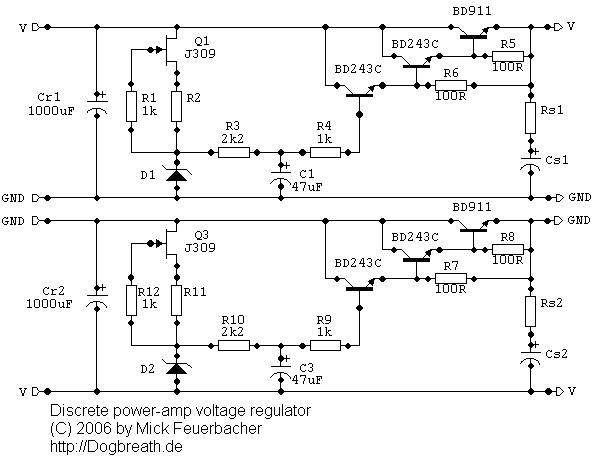The stabilizer essentially consists of a current source (J309), a Zener diode as voltage reference, and a pass transistor fed by a Darlington.
The source resistors of the JFets (R2 and R11) should be chosen such that the source current amounts to 7 to 9 mA. Which resistance is to be used depends on the Idss of the Zener but should in the range of 100 to 200 R. In my case, 120 R turned out to be appropriate.
The output voltage is Uzener - Ube of the transistors used. Choose the Zener diode accordingly (between 24 and 33 V). The input voltage, i.e. the output of the unregulated feeder supply, should be accordingly higher. I use a supply with 30 V secondaries, i.e. 42 V DC. The Zener diode is a 1N5363 (30 V) type. Under load, the output voltage is 27.8 V.
I am still experimenting with the snubber values.
It is understood that you use this stabilizer with additional bypass caps on the supply pins of the chip. Pedja recommends 100 uF for his design, I am currently using it with 2200 uF and 1000 uF. Without the use of additional output caps and/or bypass caps, the regulator may become unstable, particularly when used with slightly inductive loads!
Using a 22 uF output cap I measured an absolutely flat output on my scope (amplitude of residual ripple and noise well below 1 mV). Under varying load, the voltage breaks down only by about 0.2 V (i.e. less than 1 %) between currents of 50 mA and 1.5 A.






